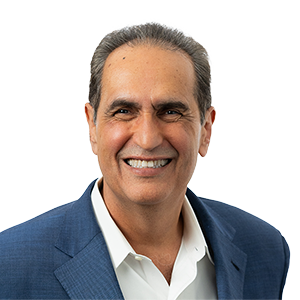Introduction
President Trump’s recent tariffs appear to have direct implications for initial public offering (IPO) activity in what was forecasted to be a blockbuster year for such markets. Fresh market turbulence has stalled as a handful of IPOs of companies like US$15 billion Klarna, and US$50 billion Medtech company, Medline, have been put on hold. Investor appetite for IPOs seems to be on thin ice.
This is because some recent IPOs have failed to impress and the number of offerings fell 17.7 percent to 1,065 according to Dealogic data. Given that a reasonable amount of market liquidity exists, as well as a pent up desire to put the cash at work, companies should try deviating from the archaic gold standard approach of an IPO and resort to an alternative route of a special purpose acquisition company (SPAC).
Volatility threat to IPOs as investors grapple with fresh uncertainty
The IPO momentum has been stalled by fresh uncertainty, making it harder for companies to assess their valuations. Prices will be subjected to projections that the deal makers will forecast in accordance with inflation and interest rates.
Since election day, the stock market has plummeted as the S&P 500 has fallen more than 6 percent and Nasdaq 100 has gone down more than 10 percent, as per the data shown by LSEG. A tumbling stock market has dampened investor confidence in IPOs making it harder for companies to go public. The biggest dip followed after President Trump’s announcement of sweeping tariffs that rattled the world trading order. In the two trading days on since April 9th announcement, the Dow Jones industrial average lost 9.2 percent, the S&P 500 fell 10.5 percent and the tech-heavy Nasdaq tumbled 11.4 percent.
In this highly volatile market, investors and issuers are unlikely to assess the workability of different business models and as a consequence assessment of price equity becomes difficult than ever. Two IPOs by Venture Global, a liquefied natural gas exporter, have performed disappointingly. The company’s shares dropped nearly 60 percent as the company went public seeing a significant decline of US$33 billion in valuation. This sends shocking waves in an already tumbling IPO market. Some European companies have also delayed their IPO plans. In these turbulent times where investor confidence has been nothing short of shaky, it is best for companies to opt for SPACs instead.
How SPACs bypass the tariff trap
Beginning as an innovative circumvention to the traditional IPO, regulatory loopholes were the founding principle of SPACs. Prior to the emergence of SPACs, any organization that desired to go public would engage a bank to underwrite its initial public offering of stock through an IPO. The primary objective of a SPAC is to provide a private company with an alternative means of accessing public market. A shell company’s IPO initiates the life cycle of a SPAC. In order to finance their merger with the target company, each SPAC achieves an IPO share price of US$10. The private company’s market access is facilitated by the merger of the newly established publicly traded shell company (the SPAC) and the targeted private company. Following the merger of the publicly traded SPAC with the private company, the SPAC dissolves, leaving the former private company as the sole entity available on the public market under a new ticker.
SPACs vs. IPOs – The new Wall Street deal-making staple in a tariff driven economy
SPACs emerged as a more favorable alternative to the traditional IPO route following the tariff policies recently introduced by President Trump, specifically the blanket 10 percent import tariff with significantly higher levies targeting countries like China and Vietnam. Amid the 90 day pause of reciprocal tariffs, China’s not being exempted as United States has levied up to 145 percent tariffs on all Chinese imports. The exempt categories include electronics such as smartphones, computer and processing chips amongst others. President Trump’s policy appears to have direct consequences on the IPO market. It has significantly impacted the IPO roadshows and company valuations. During an IPO roadshow, a company’s main goal is to attract potential investors by offering a robust financial and strategic vision. A fundamental challenge introduced by tariffs is the discussion by companies about their increased cost structure and profitability. Imposition of tariffs reduces profit margin as it increases the cost of goods sold, depreciating a company’s financial health and value. This in return decreases the appetite of an investor who fixates on a company’s financial health. Companies often face challenges when inquired about questions like, “How will your margins hold up if tariffs increase further?” or “What contingency plans do you have for your supply chain?” Companies may find it difficult to present convincing future profit projections if tariffs significantly increase costs. Tariffs inject a high degree of uncertainty into the economic landscape, making it difficult for companies to provide precise forecasts.
In this case, a SPAC offers a competitive advantage in this highly volatile market. Companies opting for a SPAC route have greater flexibility in financial reporting. This is attributed to SPACs being able to offer forward looking projections that are less constrained by short term market disruptions allowing companies to present a long term growth potential to the investors. In a tariff driven economy, SPAC has the benefit of valuation control. Unlike conventional IPOs, SPACs permit a target company to enter into bilateral negotiations with SPAC sponsors. This presents sufficient wiggle room to discuss long term growth strategies giving confidence to the investors among a rattling world trade order.
SPACs ensure companies are less exposed to the kind of price swings that are common in traditional IPOs. This is typically because the price discovery process in a traditional IPO typically occurs one day prior to the IPO, at the conclusion of a six month to nine month process of going public. The underwriters typically undervalue the company to provide an advantage to their traditional institutional clients. In contrast, the price discovery process in a SPAC merger typically occurs upfront, typically upon the signing of a term sheet, and is a bilateral negotiation between the SPAC and the target. This process frequently results in a higher valuation of the company without the pressure of short term disruptions of public market sentiment.
Since the SPAC sponsor and the company can negotiate terms and the merger valuation privately, they can agree on a more reasonable and realistic valuation. Companies may be compelled to reduce their offering price in response to investor hesitancy, as IPO valuations are exceedingly susceptible to market sentiment. SPAC transactions are a subject of bilateral negotiations held privately and are not subject to the whims of market timing. This insulation allows companies to focus on strategic planning and deal execution without being buffeted by external policy shocks.
SPACs: Ensuring capital certainty and stability in volatile markets
From the time SPACs go public, there is certainty in the capital that has been committed, which is a fundamental advantage in highly volatile financial environment. SPAC sponsors will often raise debt or private investment in public equity (PIPE) funding in addition to their original capital to not only finance the transaction but also to stimulate growth for the combined company. The purpose of this backstop debt and equity is to guarantee the successful completion of the transaction, even if the majority of SPAC investors redeem their shares. In a traditional IPO, however, the capital only materializes if investor demand is sufficient at the time of pricing, something that is heavily influenced by tariffs.
Furthermore, a SPAC merger does not necessitate an extensive roadshow to pique the interest of investors in public exchanges. Sponsors of SPAC are frequently seasoned financial and industrial professionals. They may utilize their network of contacts to provide management expertise particularly helpful for companies as they grapple with complexities like tariffs and regulatory compliance. This partnership like model adds another layer of stability and credibility to the deal, which is especially appealing during periods of economic disruption.
Conclusion
In the middle of a rattling world trade order, the future of SPACs is not so bleak as it is a viable alternative for companies seeking to go public in today’s tariff laden economy. SPACs have a competitive edge over an IPO market because it offers a more stable, and a valuation friendly route. The speed and efficiency of SPACs in volatile markets is invaluable compared to traditional IPOs. As global trade policies continue to evolve, companies should weigh SPACs not just as a temporary alternative, but as a powerful long term strategy for navigating uncertain economic landscapes making it a Wall Street dealmaking staple.
Special thanks to law clerk Mariam Syed for assisting in the preparation of this article.
This alert does not constitute legal or business advise but it is purely for informational purposes. The views expressed in this alert are solely of the author of this alert




